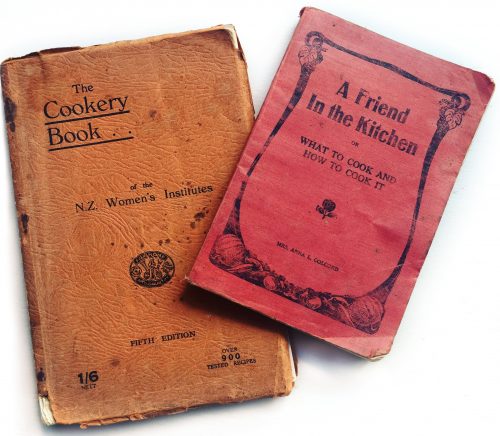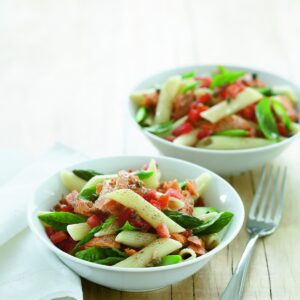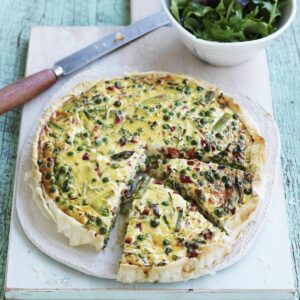
I am an avid collector of old recipe books. I think the recipe books of the past are a window into the lives of those who’ve gone before us. They give us a fascinating peek into the world of our mothers, grandmothers and great grandmothers.
Fathers too, but I think it is fair to say that recipe books have been mostly a female preserve until relatively recently.
Recipe books of the past can be both aspirational – presenting a perfect life we may want to have but doesn’t necessarily reflect reality – and practical. The latter books are the ones that contain the recipes and tips people probably actually cooked.
Recently I acquired a treasure: The Cookery Book of the NZ Women’s Institutes, Fifth Edition. Dated 1937, this contains ‘over 900 tested recipes and many useful hints’. In a pre-refrigeration age, the hints are heavily focused on keeping things fresh or preserving them so they stay edible. They’re also from a time when Kiwi women did everything themselves, starting from dealing with a carcass.
Under the heading ‘Reliable way to pickle meat in hot weather’ we’re told to ‘half fill a clean benzene tin with water, 1/2 cup sugar, 2 teaspoons saltpetre and enough salt to float a fresh egg’.
If you need to know how to cook a pukeko or a swan, that’s here too.
It strikes me that many of the book’s instructions assume the reader already has a degree of knowledge and skill, which modern recipe books never do. ‘Stew the pears until tender’, we are instructed in the recipe for Pear Charlotte, before being advised to ‘make a meringue from the white of one egg’. Today’s recipe writers know that today’s readers need far more detail: how to do the stewing, quantities of water, sugar and lemon juice, and how to make a meringue. The Women’s Institute readers of 1937 knew these things already.
The dishes of the past can seem bland, plain and even unappetising. The main seasonings used in the Women’s Institute recipe book are salt and pepper, with a smattering of curry powder sometimes. Garlic is never mentioned, although parsley is sprinkled here and there. Cheese is often melted on top of things.
The dishes are also not super healthy by today’s standards. Salads feature mostly cooked and cooled vegetables such as spinach, and token amounts of lettuce arranged carefully and doused in boiled or creamed dressings. There is not a huge focus on vegetables anywhere.
The same is true when I skip forward a few decades in my collection. A set of recipe cards featuring fish dishes of the 1960s offers some frankly horrifying dishes, all of them brown and white. There’s the odd pea or mushroom but, apart from that, these meals are vege-free zones.
There is fruit, though. The curried cod pie features an apple, and the creamed haddock tropicana is garnished with sweetened and browned bananas. I’ve been dared to make this one but, so far, I haven’t been game.
I think it’s the baking recipes of the past that we tend to think of fondly and carry through the generations. Every family has a recipe for a cake or a slice that was nana’s or mum’s. These recipes hold special fondness because we remember them from family gatherings and childhood lunchboxes. A good two-thirds of the recipes in the 1937 book are baking.
However, even with these recipes, there are differences with what we’re used to today. The sugar content tends to be a lot higher in older recipes and they taste incredibly sweet. My mum recently recreated a couple of uncooked slices I remember loving as a child. They both contain crumbled biscuits, sugar and sweetened condensed milk. Eating these now, they taste delicious, but also very, very sweet. They’re lovely as a small treat, but not something you’d want to have every day, and that’s probably how our nanas intended them to be.
It’s lovely to look at recipes in a nostalgic light, but it’s fascinating to see how far we’ve come too.
www.healthyfood.com










